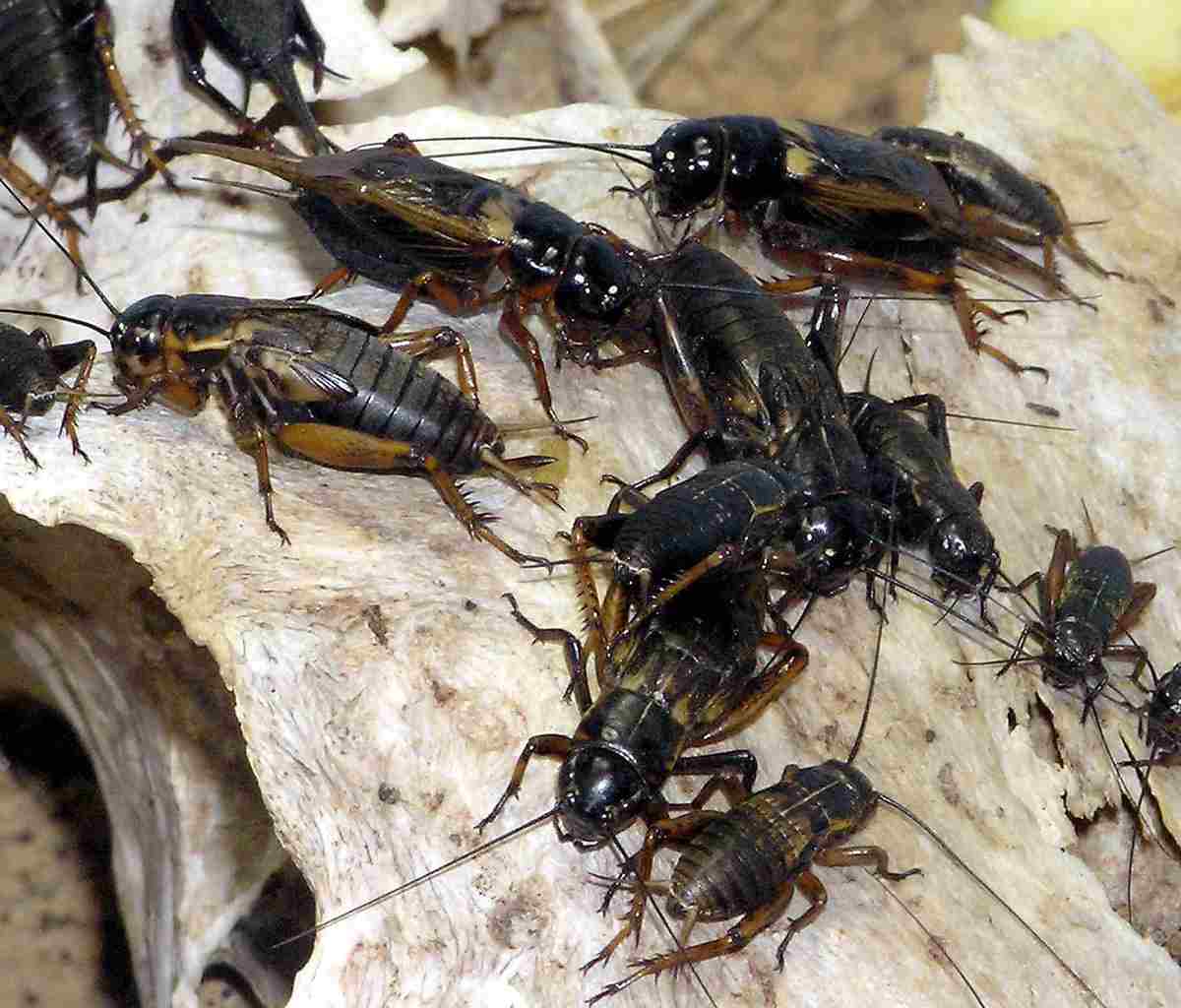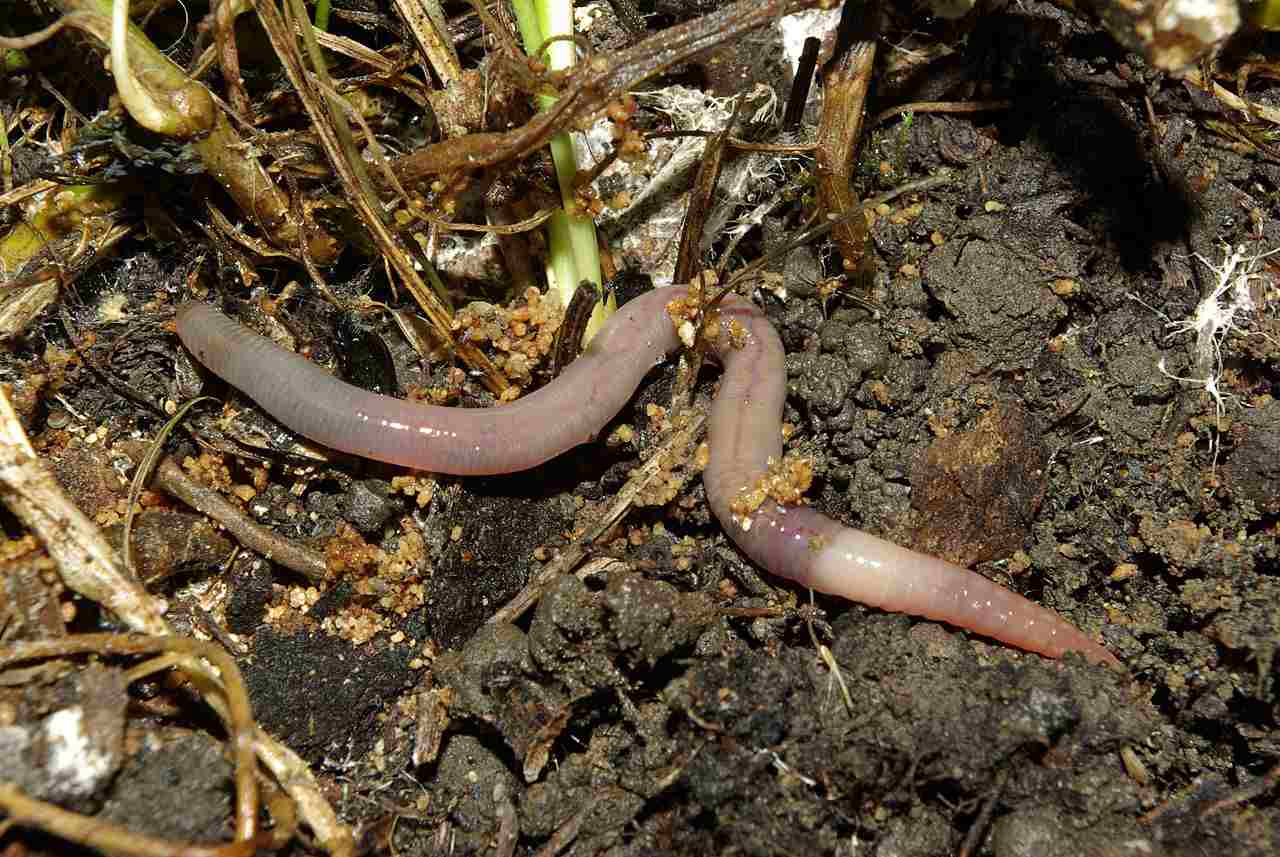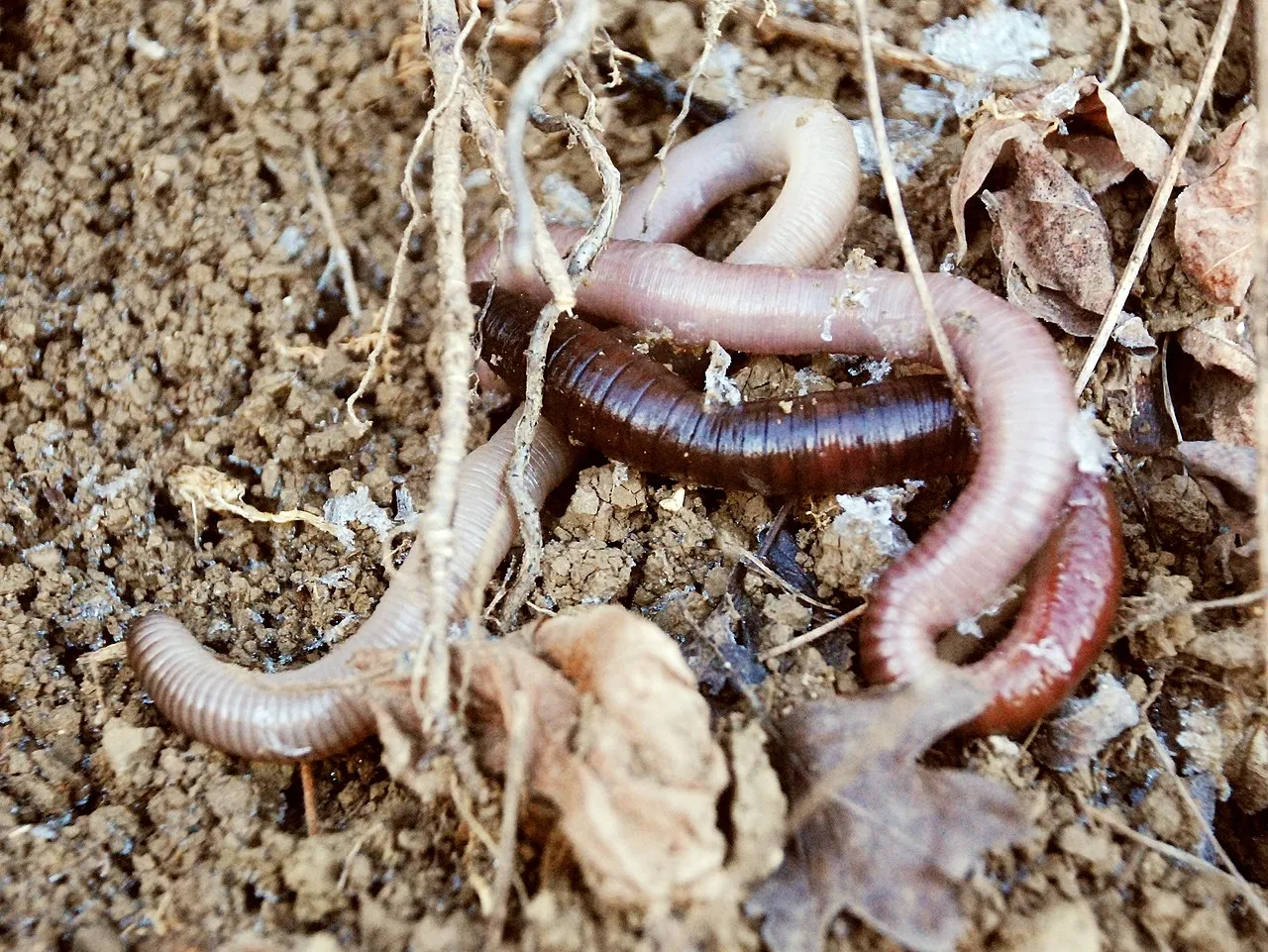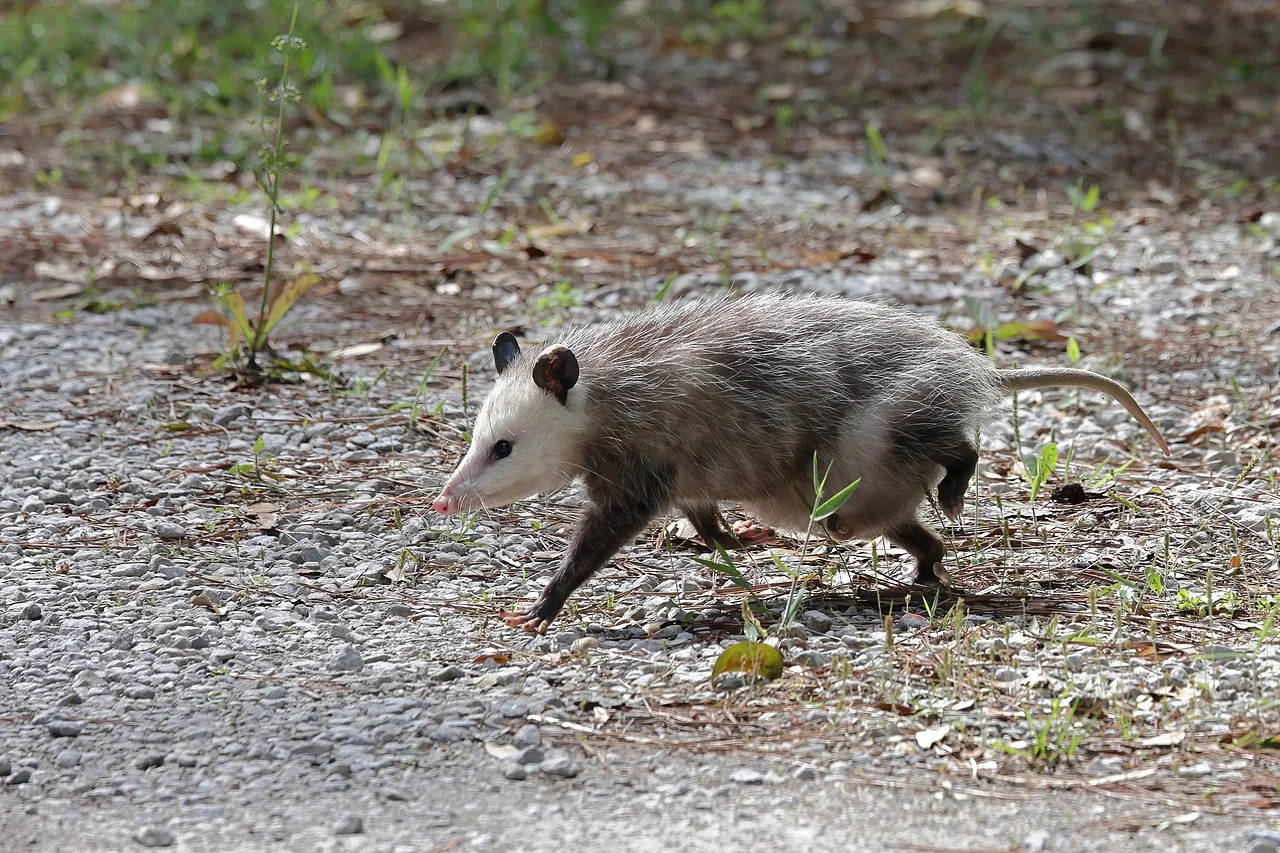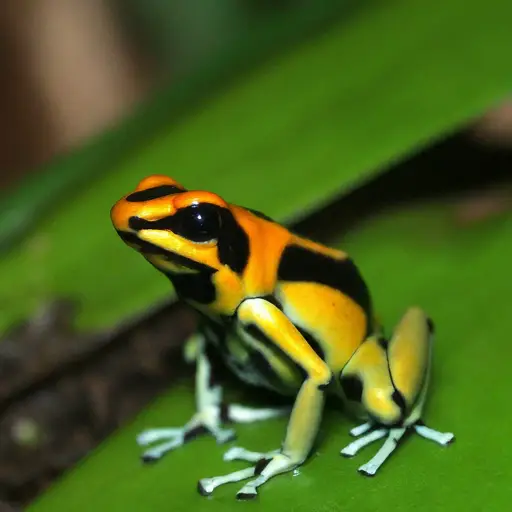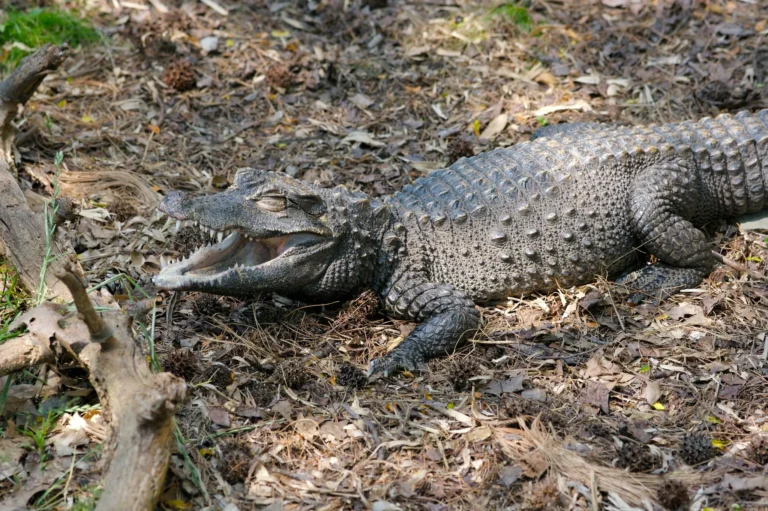17+ Detritivores In Wisconsin And Its Environs
Examples of Detritivores in Wisconsin are crickets, pillbugs, isopods, centipedes, amphipods, nematodes, and leeches. These organisms contribute to nutrient cycling by breaking down decaying organic matter in various environments. They play critical roles in soil health, pest control, and food webs, helping maintain the ecological balance in Wisconsin’s diverse ecosystems.
1. Earthworms (e.g., Lumbricus terrestris)
Earthworms, such as Lumbricus terrestris, play a crucial role in the ecosystems of Wisconsin. These detritivores are responsible for breaking down organic matter in soil, contributing to the nutrient cycle. As they burrow through the ground, they aerate the soil, which improves its structure and allows roots to grow more easily. The tunnels they create also facilitate water infiltration, reducing erosion and promoting a healthier environment for other soil organisms and plant life.
The activity of earthworms is a significant factor in soil fertility. As they consume decaying plant material and other organic debris, they produce castings—rich in nutrients like nitrogen, phosphorus, and potassium. These castings serve as natural fertilizers, enhancing soil health and promoting robust plant growth. Earthworms like Lumbricus terrestris are integral to sustainable agriculture and maintaining balanced ecosystems in Wisconsin, where they not only improve soil quality but also support biodiversity.
2. Woodlice (e.g., Armadillidium vulgare)
Woodlice, including Armadillidium vulgare, are important detritivores in Wisconsin’s ecosystems, commonly found in moist, shaded environments. These small crustaceans, often known as pillbugs or roly-polies, play a critical role in breaking down decaying organic matter, such as fallen leaves and rotting wood. By consuming this decomposing material, woodlice contribute to nutrient cycling and help maintain soil health.
Woodlice have a unique ability to roll into a ball when threatened, offering them protection from predators. They are often found in gardens, under rocks, and in forested areas where they assist in decomposition and nutrient recycling. Their presence can indicate a healthy ecosystem, as they are highly sensitive to changes in moisture and temperature, often thriving in stable environments that support a rich diversity of life.
3. Millipedes (e.g., Narceus americanus)
Millipedes like Narceus americanus are detritivores that play a key role in Wisconsin’s forests and gardens. These elongated, multi-legged arthropods primarily consume decaying plant material, such as fallen leaves and rotting wood, aiding in decomposition and nutrient cycling. By breaking down complex organic matter, millipedes help to return essential nutrients to the soil, which benefits plant growth and soil health.
Though generally slow-moving, millipedes have a unique defense mechanism. When threatened, they can secrete chemicals that deter predators, providing a natural form of protection. In addition, their burrowing activities help aerate the soil and promote water infiltration, similar to earthworms. Their role in decomposition and soil maintenance makes them valuable contributors to Wisconsin’s ecosystems.
4. Springtails (e.g., Collembola species)
Springtails, part of the Collembola species, are tiny detritivores that play a significant role in Wisconsin’s ecosystems. Despite their small size, they are among the most abundant soil-dwelling organisms, often found in large numbers in leaf litter, soil, and decaying wood. They feed on fungi, algae, and decaying organic matter, contributing to the decomposition process and nutrient cycling.
Springtails are known for their unique ability to “spring” or jump several times their body length, thanks to a specialized appendage called a furcula. This ability helps them escape predators and move quickly through their environment. Their presence in the soil indicates a healthy ecosystem, as they are sensitive to environmental changes, particularly moisture levels. By breaking down organic matter and contributing to soil structure, springtails support overall soil health and fertility.
5. Ants (e.g., Formica species)
Ants, including those from the Formica species, are highly organized social insects that play a multifaceted role in Wisconsin’s ecosystems. As detritivores, they help break down organic matter, recycling nutrients back into the soil. Ants are known to build extensive underground colonies, which aerate the soil and improve water infiltration. They often transport organic materials into their nests, accelerating the decomposition process and creating a rich environment for microbial activity.
Beyond their role in decomposition, ants are also vital in seed dispersal and pest control. Some species form symbiotic relationships with plants, protecting them from herbivorous insects in exchange for food or shelter. Additionally, ants contribute to the ecological balance by preying on other insects, thus helping to regulate pest populations. Their complex social structures and interactions with other species make them an integral component of Wisconsin’s ecosystems.
6. Beetles (e.g., Carabidae species)
Beetles, especially those from the Carabidae family, are significant detritivores in Wisconsin. As ground beetles, they play a critical role in decomposing organic matter, aiding in nutrient cycling within various ecosystems. These beetles often prey on other insects and small invertebrates, contributing to natural pest control. Carabidae beetles are typically found in wooded areas, gardens, and grasslands, where they perform their essential ecological functions.
Beyond their role as decomposers, beetles also serve as prey for various animals, supporting a broader food web. The diverse shapes and sizes of Carabidae species reflect their adaptability to different habitats and ecological niches. Their presence in an ecosystem can indicate a healthy environment, as they often require stable conditions to thrive. By breaking down organic matter and controlling pest populations, beetles contribute to the overall health and balance of Wisconsin’s natural systems.
7. Termites (e.g., Reticulitermes flavipes)
Termites, including the species Reticulitermes flavipes, are known for their wood-consuming habits, which play a crucial role in Wisconsin’s ecosystems. As detritivores, termites break down cellulose from dead wood and plant material, contributing to nutrient recycling. Their colonies, often hidden within wooden structures or underground, create a complex social system with distinct roles for each member. The activity of termites helps to decompose and recycle dead plant matter, returning essential nutrients to the soil.
While termites are beneficial in natural settings, they can pose risks to man-made structures due to their wood-eating habits. Homeowners in Wisconsin need to be aware of termite activity to prevent damage to buildings and other wooden constructions. Despite this potential risk, termites are an essential part of the ecosystem, contributing to the breakdown of organic matter and supporting other soil organisms through their detritivorous activities.
8. Mites (e.g., Oribatida species)
Mites, specifically those from the Oribatida family, are microscopic detritivores that play a vital role in Wisconsin’s soil ecosystems. These tiny arthropods feed on decaying organic matter, such as dead plant material and fungi, contributing to the decomposition process. Oribatid mites are often found in leaf litter, moss, and soil, where they play a significant role in nutrient cycling and maintaining soil structure.
Although mites are often overlooked due to their size, they are highly diverse and abundant in many ecosystems. Their role in breaking down organic matter helps create a healthy soil environment, supporting plant growth and microbial activity. Additionally, mites serve as a food source for other small invertebrates and contribute to the complex web of life in Wisconsin’s ecosystems. Their presence is a sign of a functioning and balanced ecosystem, highlighting the importance of these tiny but influential detritivores.
9. Snails (e.g., Cepaea nemoralis)
Snails, such as Cepaea nemoralis, are common detritivores in Wisconsin, often found in gardens, forests, and grasslands. These slow-moving gastropods play an essential role in decomposing plant material, contributing to nutrient cycling and soil health. As they consume decaying leaves and other organic matter, they help break down complex substances, making nutrients more accessible for other organisms and plants.
Beyond their role in decomposition, snails are also part of the food web, serving as prey for birds, mammals, and other predators. Their spiral shells offer protection against predators and environmental stressors. The presence of snails can indicate a moist and stable environment, which is conducive to a rich and diverse ecosystem. By breaking down organic matter and supporting the food chain, snails contribute to the ecological balance in Wisconsin’s natural landscapes.
10. Slugs (e.g., Arion hortensis)
Slugs, including Arion hortensis, are another important group of detritivores in Wisconsin. Like their snail relatives, slugs contribute to the decomposition of plant material, helping to break down decaying leaves and other organic debris. Their activity supports nutrient cycling and promotes soil health, which in turn benefits plant growth. Slugs are commonly found in gardens, forests, and other areas with ample moisture, where they play a crucial role in maintaining ecological balance.
However, slugs can also be problematic in cultivated areas, as they sometimes feed on living plants, causing damage to gardens and crops. Despite this, their role as detritivores is invaluable for nutrient recycling and soil structure. Slugs have a unique adaptation in the form of mucus, which allows them to move across various surfaces and provides protection from desiccation. Their presence in an ecosystem indicates a healthy level of organic matter, contributing to the biodiversity and resilience of Wisconsin’s natural environments.
11. Flies (e.g., Drosophila species)
Flies, such as those from the Drosophila species, are well-known detritivores in Wisconsin’s ecosystems. These small insects are commonly associated with decomposing organic matter, including fruits and vegetables. Their ability to rapidly reproduce allows them to thrive in environments where organic material is abundant, contributing to the breakdown and recycling of nutrients. Flies like Drosophila play a crucial role in the decomposition process, aiding in nutrient cycling and supporting microbial activity.
Flies also serve as a food source for other animals, including birds, reptiles, and small mammals, making them an important part of the food web. While they are often viewed as pests due to their rapid reproduction and attraction to decaying material, their role in the ecosystem is vital. They help break down organic matter, which would otherwise accumulate, leading to more significant issues. By aiding in decomposition and serving as prey, flies contribute to the ecological balance in Wisconsin’s diverse environments.
12. Crickets (e.g., Gryllus species)
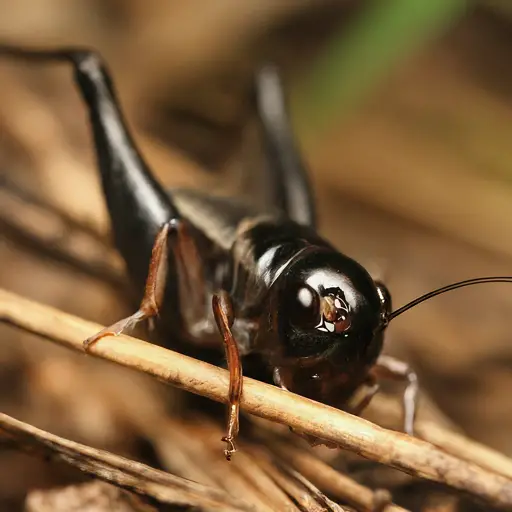
Crickets, including those from the Gryllus species, are prominent detritivores in Wisconsin. These insects play a vital role in the decomposition of organic matter, such as decaying plants and leaves. By breaking down this organic material, crickets contribute to nutrient cycling and support soil health. They are often found in grasslands, gardens, and forests, where they help maintain ecological balance.
In addition to their role in decomposition, crickets are a crucial part of the food chain, serving as prey for birds, amphibians, and small mammals. Their distinctive chirping sounds, produced by rubbing their wings together, are commonly associated with warm summer nights in Wisconsin. Crickets’ ability to thrive in various habitats makes them important contributors to the state’s biodiversity and ecosystem health.
13. Pillbugs (e.g., Armadillidium nasatum)
Pillbugs, such as Armadillidium nasatum, are a group of isopods that function as detritivores in Wisconsin’s ecosystems. They primarily feed on decaying organic matter, including leaves, wood, and plant debris. This feeding behavior helps decompose organic material and contributes to nutrient cycling, promoting soil health and fertility. Pillbugs are commonly found in moist environments, such as under rocks, logs, or within leaf litter.
One of the most recognizable traits of pillbugs is their ability to roll into a ball when threatened, a defense mechanism against predators. They play a crucial role in breaking down organic matter and are considered beneficial for gardens and forests. By aiding in decomposition and serving as a food source for other creatures, pillbugs support the ecological balance and biodiversity in Wisconsin.
14. Isopods (e.g., Oniscus asellus)
Isopods, including Oniscus asellus, are small crustaceans that serve as detritivores in Wisconsin. They contribute to the decomposition process by feeding on decaying organic matter, such as fallen leaves, wood, and plant debris. Isopods play a significant role in nutrient cycling, promoting soil health and supporting plant growth. These organisms are typically found in moist environments, including gardens, forests, and wetlands.
Isopods are often associated with their distinctive flattened bodies and segmented shells, which provide protection and flexibility. As decomposers, they are essential in maintaining ecological balance by breaking down organic material and recycling nutrients. Isopods also serve as prey for other creatures, contributing to the food web in Wisconsin’s ecosystems.
15. Centipedes (e.g., Lithobius species)
Centipedes, including those from the Lithobius species, are predatory detritivores found in Wisconsin’s ecosystems. They play a crucial role in controlling other invertebrate populations by feeding on insects and other small creatures. Centipedes are also involved in the decomposition process, as they inhabit environments with abundant organic matter, contributing to nutrient cycling.
Centipedes are characterized by their many legs and fast movements, which make them efficient predators. They are commonly found in moist environments, such as under rocks, logs, and leaf litter. Their role in controlling pest populations, combined with their contribution to nutrient cycling, makes centipedes valuable members of Wisconsin’s ecosystems.
16. Amphipods (e.g., Gammarus species)
Amphipods, including the Gammarus species, are small crustaceans that act as detritivores in Wisconsin’s aquatic ecosystems. They feed on decaying organic matter, including plant debris and algae, contributing to the decomposition process in freshwater environments. Amphipods are crucial for nutrient cycling in lakes, rivers, and streams, where they support aquatic ecosystems’ health and balance.
These small organisms are an important food source for various aquatic species, including fish and birds. Amphipods’ presence in an ecosystem can indicate a healthy environment, as they are sensitive to water quality and other environmental factors. By aiding in decomposition and serving as prey, amphipods play a significant role in maintaining the biodiversity of Wisconsin’s aquatic habitats.
17. Nematodes (e.g., Caenorhabditis elegans)
Nematodes, such as Caenorhabditis elegans, are microscopic roundworms that function as detritivores in Wisconsin’s soil ecosystems. They contribute to the decomposition process by feeding on bacteria, fungi, and decaying organic matter, promoting nutrient cycling and soil health. Nematodes are highly diverse and found in a wide range of environments, from forests to agricultural fields.
Their small size allows them to inhabit tiny spaces within the soil, where they play a crucial role in breaking down organic material. Nematodes are also a food source for other soil organisms, contributing to the soil food web. Their presence in an ecosystem is a sign of healthy soil, indicating that the decomposition process is functioning effectively.
18. Leeches (e.g., Helobdella species)
Leeches, including those from the Helobdella species, are detritivores found in Wisconsin’s freshwater ecosystems. They feed on decaying organic matter and small invertebrates, contributing to nutrient cycling in aquatic environments. Leeches are often associated with their unique feeding behavior, using suckers to attach to surfaces and consume organic material.
While leeches are known for their bloodsucking habits, many species, like Helobdella, are primarily detritivores, playing an essential role in the decomposition process. They contribute to the ecological balance in freshwater habitats, serving as prey for fish and other aquatic creatures. By breaking down organic matter and supporting the food web, leeches are valuable components of Wisconsin’s aquatic ecosystems.
*Summary
-
Crickets (Gryllus species)
-
Break down organic matter, aiding in nutrient cycling
-
Serve as prey for birds, amphibians, and small mammals
-
-
Pillbugs (Armadillidium nasatum)
-
Consume decaying organic matter
-
Roll into a ball when threatened
-
-
Isopods (Oniscus asellus)
-
Feed on organic matter, contributing to nutrient cycling
-
Serve as prey for other creatures
-
-
Centipedes (Lithobius species)
-
Predatory detritivores controlling other invertebrates
-
Contribute to nutrient cycling in soil environments
-
-
Amphipods (Gammarus species)
-
Feed on organic matter in freshwater ecosystems
-
Serve as food for fish and birds
-
-
Nematodes (Caenorhabditis elegans)
-
Microscopic detritivores feeding on bacteria and fungi
-
Contribute to soil health and nutrient cycling
-
-
Leeches (Helobdella species)
-
Detritivores in freshwater environments
-
Consume organic matter and serve as prey for fish
-
| Detritivore |
Role and Contributions
|
| Crickets |
Break down organic matter, serve as prey for other species
|
| Pillbugs |
Consume decaying organic matter, roll into a ball when threatened
|
| Isopods |
Contribute to nutrient cycling, serve as prey for other creatures
|
| Centipedes |
Control other invertebrates, contribute to nutrient cycling
|
| Amphipods |
Feed on organic matter in freshwater ecosystems, support food web
|
| Nematodes |
Feed on bacteria and fungi, contribute to soil health
|
| Leeches |
Detritivores in freshwater, consume organic matter, serve as prey
|
